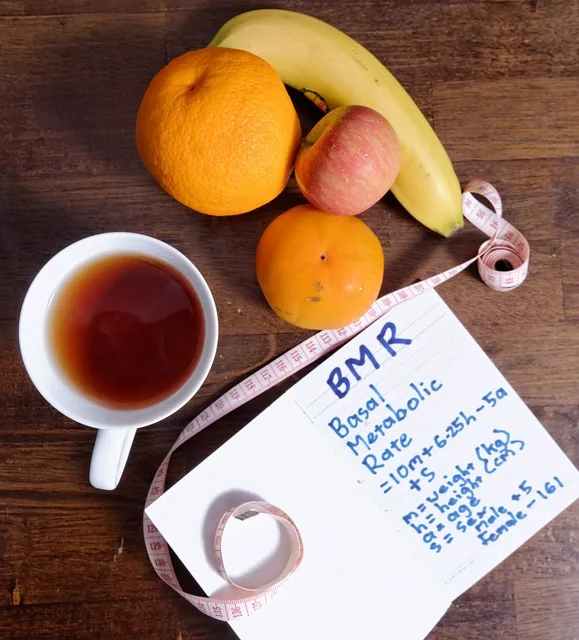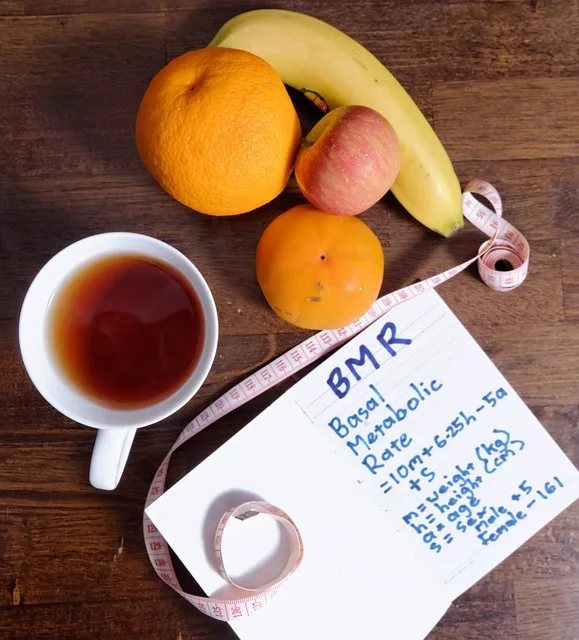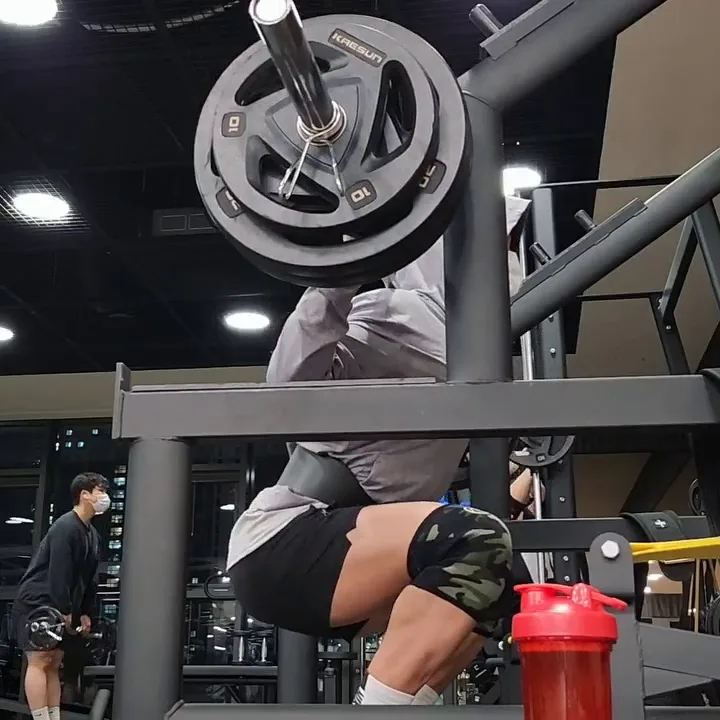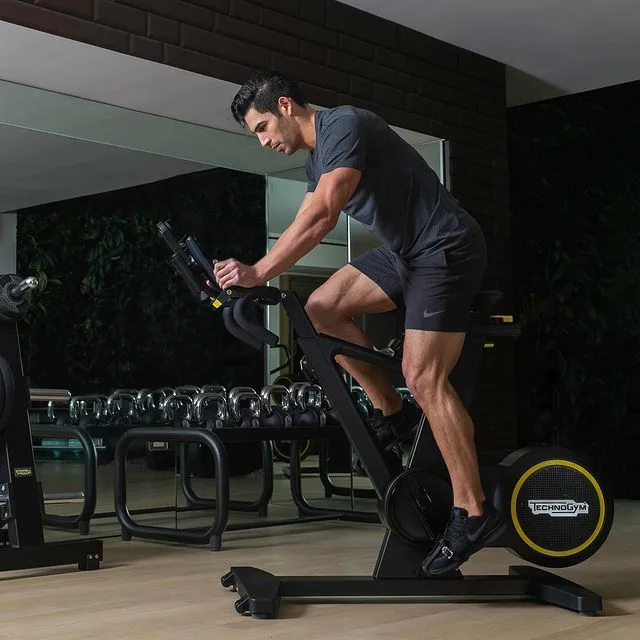Progressive overload refers to the gradual increase in the demand placed on the musculoskeletal system during physical training, usually in the strength training.
What is Progressive overload?
Progressive overload is a principle of strength training that involves gradually increasing the demand placed on the muscles through resistance or weight over time in order to continue making gains in strength, muscle size, and endurance. The idea is to progressively challenge the muscles to force them to adapt and grow stronger. This can be achieved by increasing weight, reps, sets, or manipulating rest periods. The principle of progressive overload is a cornerstone of effective resistance training and is important for achieving results in both athletic and aesthetic goals.
Benefits of progressive overload training
The specific benefits of progressive overload training may vary depending on individual factors such as age, starting fitness level, and overall health.
However, the potential benefits of overload training are explained below:
- Increased muscle strength and size: Progressive overload training has been shown to effectively increase muscle strength and size, especially when combined with adequate protein intake and adequate recovery time between workouts. 1 2
- Improved bone density: Resistance training, including progressive overload, has been shown to improve bone density, which can help reduce the risk of osteoporosis and other bone-related injuries. 3 4
- Improved athletic performance: Progressive overload training can improve athletic performance by increasing muscle strength, power, and endurance, which can help athletes perform better in their respective sports.
- Increased metabolism: Resistance training, including progressive overload, has been shown to increase the metabolism and improve body composition, which can help with weight loss and maintenance. 2
- Improved cardiovascular health: Resistance training, including progressive overload, has been shown to have positive effects on cardiovascular health, including improving cardiovascular endurance and reducing risk factors for cardiovascular disease. 5
How does progressive overload work?
Progressive overload works by gradually increasing the demand placed on the muscles through resistance or weight over time. The idea is to continuously challenge the muscles, forcing them to adapt and grow stronger. The muscles respond to this increased demand by growing and becoming stronger, allowing you to handle heavier weights and perform more repetitions over time.
Here’s how it works:
- Start with a weight that you can lift comfortably for a certain number of reps (e.g., 8-12 reps).
- Once you can perform the desired number of reps with ease, increase the weight. This forces your muscles to work harder and adapt to the increased demand.
- Continue to gradually increase the weight over time, taking into account proper form, technique, and recovery time between workouts.
What are limitations of progressive overload
Progressive overload, while a very effective principle of strength training, has several limitations that need to be considered in order to get the best results:
Plateaus
Over time, it may become more difficult to continuously increase the weight and challenge the muscles. This can lead to plateaus, where progress stalls and gains are no longer being made.
To overcome plateaus, it’s important to make modifications to the workout plan, such as increasing the weight or resistance used, changing the exercises performed, or increasing the volume (sets, reps) of the exercises. In addition, it’s important to allow for adequate rest and recovery between workouts, as well as to vary the intensity and duration of workouts to prevent the body from adapting too quickly.
Another approach to overcoming plateaus is to periodically switch up the workout plan completely, to shock the body and promote continued progress. This can be done by incorporating new exercises, using different training methods, or even trying a new sport or activity.
In conclusion, plateaus are a common limitation of progressive overload training, but can be overcome by making modifications to the workout plan, allowing for rest and recovery, and periodically switching up the workout plan.
Risk of injury
Progressive overload training can put a significant amount of stress on the muscles and joints. If not performed properly, it can lead to injury. It’s important to use proper form, technique, and equipment and to consult with a qualified professional to ensure that progressive overload training is being done safely and effectively.
Overtraining
The continuous increase in demand placed on the muscles through overload training can also lead to overtraining.
Overtraining occurs when an individual performs excessive amounts of exercise without sufficient rest and recovery. This can lead to fatigue, decreased performance, and an increased risk of injury.
To avoid overtraining, it’s important to monitor training intensity and volume, as well as to allow for adequate rest and recovery between workouts. This can include scheduling regular rest days, taking naps, and engaging in active recovery activities, such as stretching or low-intensity exercise.
In addition, it’s important to listen to the body and be aware of signs of overtraining, such as fatigue, decreased motivation, and muscle soreness. If these symptoms persist, it may be necessary to take a break from training and allow for more rest and recovery.
In conclusion, overtraining but can be avoided by monitoring training intensity and volume, allowing for adequate rest and recovery, and listening to the body’s signs of overtraining.
Individual differences
Progressive overload works differently for different people, depending on factors such as age, starting fitness level, and overall health.
These differences can impact the effectiveness of a progressive overload workout plan and must be taken into consideration when designing a training program.
For example, a person with a long limb structure may have a distinct advantage in certain exercises compared to someone with a shorter limb structure. A person with a higher percentage of fast-twitch muscle fibers may respond better to heavier weights and lower reps, while someone with a higher percentage of slow-twitch muscle fibers may respond better to lighter weights and higher reps. Some people may be naturally more competitive and motivated by competition, while others may be more self-motivated and prefer to work out alone.
Needs a well-designed program
In order to be effective, overload training must be part of a well-designed strength training program that takes into account individual goals, fitness level, and overall health.
Methods of increasing the progressive overload
Increasing weight
Increasing weight is one of the most common methods of increasing the progressive overload in a workout. By adding weight to the exercises performed, the individual challenges their muscles to work harder and adapt to the increased resistance. This leads to improved strength and muscle growth.
Increasing reps
Increasing reps is another method of increasing the progressive overload in a workout. By performing more reps at a given weight, the individual challenges their muscles to work for longer and adapt to the increased volume of work. This leads to improved muscular endurance, muscle growth.
Over time, the individual can gradually increase the number of reps performed in each set, challenging their muscles to work for longer periods.
Decreasing rest periods
Decreasing rest periods is another method of increasing the progressive overload in a workout. This places a greater demand on the muscles, forcing them to work harder to perform the same number of reps.
By reducing the time between sets, the individual performs more work in a shorter period, challenging their muscles to work harder and adapt to the increased volume and intensity of work.
Set a specific amount of time for rest between sets and gradually decrease the rest period as the individual becomes stronger and more comfortable with the increased intensity.
Instead of taking a complete break between sets, the individual can perform light exercises such as jumping jacks, high knees, or bodyweight squats to keep the heart rate elevated and reduce rest periods.
Changing exercises
Changing exercises is another method of increasing the progressive overload in a workout. By incorporating different exercises, the individual can target different muscle groups, recruit different muscle fibers, and challenge their muscles in new ways, leading to improved strength, power, and endurance.
Here are a few ways to change exercises in a workout:
- Varying the exercise type: Incorporating different types of exercises, such as isolation exercises, compound exercises, plyometrics, or Olympic lifting, challenges the muscles in different ways, leading to improved strength, power, and endurance.
- Varying the equipment: Using different types of equipment, such as barbells, dumbbells, kettlebells, resistance bands, or bodyweight exercises, challenges the muscles in different ways and recruits different muscle fibers.
- Varying the angle or position: Changing the angle or position of an exercise, such as incline or decline presses, or performing exercises on a stability ball, can increase the intensity and challenge the muscles in new ways.
- Incorporating different variations of an exercise: Performing different variations of an exercise, such as wide-grip, close-grip, or hammer grip, can target different muscle fibers and increase the intensity of the workout.
Incorporating supersets, dropsets, and other advanced techniques
Incorporating supersets, dropsets, and other advanced techniques are additional methods of increasing the progressive overload in a workout. These techniques increase the intensity and challenge the muscles in new ways, leading to improved strength, power, and endurance.
Here are a few examples of advanced techniques:
- Supersets: A superset is performing two exercises back-to-back with no rest in between. This increases the intensity of the workout and challenges the muscles in new ways.
- Dropsets: A dropset is performing an exercise to failure and then immediately reducing the weight and continuing to perform repetitions until failure again. This increases the intensity and challenges the muscles in new ways.
- Complexes: A complex is a combination of exercises performed back-to-back with a single piece of equipment, such as a barbell or kettlebell. This increases the intensity and challenges the muscles in new ways.
- Circuit Training: Circuit training is performing multiple exercises back-to-back with little to no rest in between. This increases the intensity and overall volume of the workout, leading to improved strength and endurance.
Principles of Progressive Overload Training
The following principles serve as the foundation for a successful progressive overload training program, and should be followed in order to get the best results.
Gradual increase in demand
Progressive overload training involves gradually increasing the demand placed on the muscles, usually through the use of resistance, weight, or other forms of stress.
Consistency
In order for progressive overload to be effective, it must be performed consistently over time. This means sticking to a well-designed strength training program and making regular, gradual increases in the weight lifted.
Individualized approach
Progressive overload training should be tailored to the individual, taking into account factors such as starting fitness level, overall health, and personal goals.
Proper form and technique
Proper form and technique are essential for performing progressive overload training safely and effectively. This includes using proper equipment, avoiding injury, and performing each exercise with proper form and technique.
Adequate recovery
Adequate recovery is also important in progressive overload training, as it allows the muscles to repair and rebuild after each workout, leading to stronger and healthier muscles over time.
Regular assessment and adjustment
In order to continue making progress, it’s important to regularly assess and adjust the training program, taking into account factors such as strength gains, progress, and overall health.
How to implement progressive overload
- Establish a starting point: Determine your current fitness level by performing a series of strength tests and assessing your current weights, reps, and sets. This will give you a baseline to work from and help you track progress over time.
- Develop a program: Work with a qualified professional to design a strength training program that incorporates progressive overload principles and takes into account your individual goals, fitness level, and overall health.
- Start with a weight that can be lifted for 8-12 reps with good form: This weight should be heavy enough to challenge the muscles, but light enough to allow for proper form and technique.
- Gradually increase the weight: Every 4-6 weeks, gradually increase the weight by 2.5-5% per session. This will ensure that the muscles are gradually being challenged and forced to adapt.
- Incorporate variation: Introduce new exercises, movements, and techniques over time to keep the muscles challenged and prevent boredom.
- Focus on proper form and technique: Proper form and technique are essential for performing progressive overload training safely and effectively. Take the time to perfect each exercise, focusing on proper form and technique, and avoid rushing through the movements.
- Monitor progress: Regularly assess your progress, tracking weights, reps, and sets, and making adjustments as needed. This will help you to see how far you’ve come and ensure that you’re on track to reach your goals.
- Allow for adequate recovery: Adequate recovery is essential for the muscles to repair and rebuild after each workout. Allow enough time between workouts for the muscles to recover and avoid overtraining.
6-week progressive overload training program
This 6-week workout plan is a sample plan and the weights and sets/reps can be adjusted based on individual fitness level and progress. Additionally, the plan should be accompanied by proper nutrition and adequate recovery for best results.
Workout schedule
Week 1-2:
- Monday: Chest and Triceps
- Tuesday: Legs and Abs
- Wednesday: Rest
- Thursday: Back and Biceps
- Friday: Shoulders
- Saturday: Rest
- Sunday: Rest
Week 3-4:
- Monday: Chest and Triceps
- Tuesday: Legs and Abs
- Wednesday: Rest
- Thursday: Back and Biceps
- Friday: Shoulders
- Saturday: Rest
- Sunday: Rest
Week 5-6:
- Monday: Chest and Triceps
- Tuesday: Legs and Abs
- Wednesday: Rest
- Thursday: Back and Biceps
- Friday: Shoulders
- Saturday: Rest
- Sunday: Rest
Workout plan
Week 1-2
- Monday: Chest and Triceps
- Warm-up: 5-10 minutes of light cardio and dynamic stretching
- Bench press (3 sets of 8-12 reps)
- Incline dumbbell press (3 sets of 8-12 reps)
- Dumbbell flys (3 sets of 8-12 reps)
- Tricep pushdown (3 sets of 8-12 reps)
- Tricep overhead extension (3 sets of 8-12 reps)
- Tuesday: Legs and Abs
- Thursday: Back and Biceps
- Warm-up: 5-10 minutes of light cardio and dynamic stretching
- Lat pulldown (3 sets of 8-12 reps)
- Seated row (3 sets of 8-12 reps)
- Dumbbell bicep curl (3 sets of 8-12 reps)
- Hammer curl (3 sets of 8-12 reps)
- Friday: Shoulders
- Warm-up: 5-10 minutes of light cardio and dynamic stretching
- Overhead press (3 sets of 8-12 reps)
- Upright row (3 sets of 8-12 reps)
- Lateral raise (3 sets of 8-12 reps)
- Front raise (3 sets of 8-12 reps)
- Cardio – treadmill (20-25 minutes)
Week 3-4
- Monday: Chest and Triceps
- Warm-up: 5-10 minutes of light cardio and dynamic stretching
- Bench press (3 sets of 8-12 reps) with increased weight
- Incline dumbbell press (3 sets of 8-12 reps) with increased weight
- Dumbbell flys (3 sets of 8-12 reps) with increased weight
- Tricep pushdown (3 sets of 8-12 reps) with increased weight
- Tricep overhead extension (3 sets of 8-12 reps) with increased weight
- Tuesday: Legs and Abs
- Warm-up: 5-10 minutes of light cardio and dynamic stretching
- Squats (3 sets of 8-12 reps) with increased weight
- Lunges (3 sets of 8-12 reps) with increased weight
- Deadlifts (3 sets of 8-12 reps) with increased weight
- Plank (3 sets of 30-60 seconds) with increased time
- Bicycle crunches (3 sets of 8-12 reps) with increased weight
- Thursday: Back and Biceps
- Warm-up: 5-10 minutes of light cardio and dynamic stretching
- Lat pulldown (3 sets of 8-12 reps) with increased weight
- Seated row (3 sets of 8-12 reps) with increased weight
- Dumbbell bicep curl (3 sets of 8-12 reps) with increased weight
- Hammer curl (3 sets of 8-12 reps) with increased weight
- Friday: Shoulders
- Warm-up: 5-10 minutes of light cardio and dynamic stretching
- Overhead press (3 sets of 8-12 reps) with increased weight
- Upright row (3 sets of 8-12 reps) with increased weight
- Lateral raise (3 sets of 8-12 reps) with increased weight
- Front raise (3 sets of 8-12 reps) with increased weight
- Cardio – treadmill (20-25 minutes)
Week 5-6
- Monday: Chest and Triceps
- Warm-up: 5-10 minutes of light cardio and dynamic stretching
- Bench press (3 sets of 8-12 reps) with increased weight
- Incline dumbbell press (3 sets of 8-12 reps) with increased weight
- Dumbbell flys (3 sets of 8-12 reps) with increased weight
- Tricep pushdown (3 sets of 8-12 reps) with increased weight
- Tricep overhead extension (3 sets of 8-12 reps) with increased weight
- Tuesday: Legs and Abs
- Warm-up: 5-10 minutes of light cardio and dynamic stretching
- Squats (3 sets of 8-12 reps) with increased weight
- Lunges (3 sets of 8-12 reps) with increased weight
- Deadlifts (3 sets of 8-12 reps) with increased weight
- Plank (3 sets of 30-60 seconds) with increased time
- Bicycle crunches (3 sets of 8-12 reps) with increased weight
- Thursday: Back and Biceps
- Warm-up: 5-10 minutes of light cardio and dynamic stretching
- Lat pulldown (3 sets of 8-12 reps) with increased weight
- Seated row (3 sets of 8-12 reps) with increased weight
- Dumbbell bicep curl (3 sets of 8-12 reps) with increased weight
- Hammer curl (3 sets of 8-12 reps) with increased weight
- Friday: Shoulders
- Warm-up: 5-10 minutes of light cardio and dynamic stretching
- Overhead press (3 sets of 8-12 reps) with increased weight
- Upright row (3 sets of 8-12 reps) with increased weight
- Lateral raise (3 sets of 8-12 reps) with increased weight
- Front raise (3 sets of 8-12 reps) with increased weight
- Cardio – treadmill (20-25 minutes)
- Plotkin D, Coleman M, Van Every D, Maldonado J, Oberlin D, Israetel M, Feather J, Alto A, Vigotsky AD, Schoenfeld BJ. “Progressive overload without progressing load? The effects of load or repetition progression on muscular adaptations.” PeerJ. 2022 Sep 30;10:e14142. doi: 10.7717/peerj.14142. PMID: 36199287; PMCID: PMC9528903.[↩]
- Peterson MD, Pistilli E, Haff GG, Hoffman EP, Gordon PM. “Progression of volume load and muscular adaptation during resistance exercise.” Eur J Appl Physiol. 2011 Jun;111(6):1063-71. doi: 10.1007/s00421-010-1735-9. Epub 2010 Nov 27. PMID: 21113614; PMCID: PMC4215195.[↩][↩]
- Layne JE, Nelson ME. “The effects of progressive resistance training on bone density: a review.” Med Sci Sports Exerc. 1999 Jan;31(1):25-30. doi: 10.1097/00005768-199901000-00006. PMID: 9927006.[↩]
- Hong AR, Kim SW. “Effects of Resistance Exercise on Bone Health.” Endocrinol Metab (Seoul). 2018 Dec;33(4):435-444. doi: 10.3803/EnM.2018.33.4.435. PMID: 30513557; PMCID: PMC6279907.[↩]
- Khushhal A, Nichols S, Carroll S, Abt G, Ingle L. Characterising the application of the “progressive overload” principle of exercise training within cardiac rehabilitation: A United Kingdom-based community programme. PLoS One. 2020 Aug 13;15(8):e0237197. doi: 10.1371/journal.pone.0237197. PMID: 32790796; PMCID: PMC7425879.[↩]















